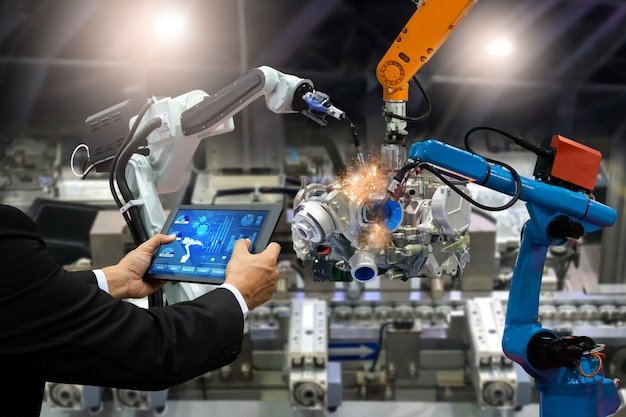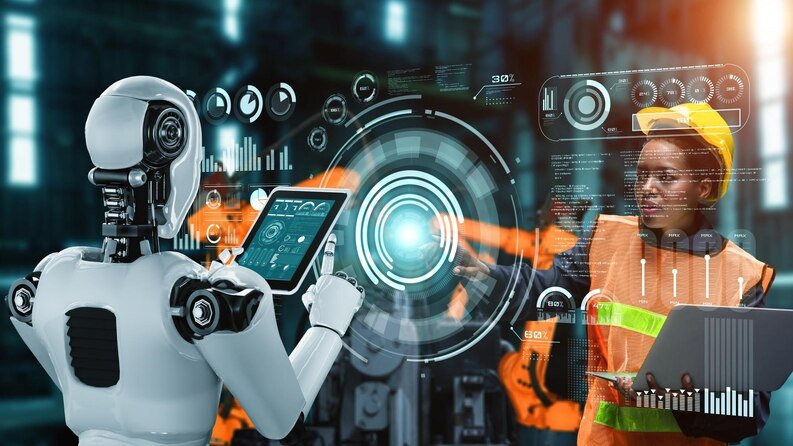The world of robotics and automation is rapidly evolving, with new technologies and applications emerging every day. In this blog post, we will explore the basics of robotics and automation, their impact on various industries, and their future potential.
What are Robotics and Automation?
Robotics is a branch of engineering that deals with the design, construction, and operation of robots. Robots are machines that can perform tasks autonomously or semi-autonomously, with little or no human intervention. Automation, on the other hand, refers to the use of technology to perform tasks automatically, without human intervention.

Applications of Robotics and Automation
Robotics and automation have a wide range of applications across various industries, including:
- Manufacturing :- Robotics and automation are widely used in manufacturing industries, where they can perform repetitive tasks with high precision and speed. This includes tasks such as welding, painting, and assembly.
- Healthcare :- Robotics and automation are increasingly being used in healthcare, particularly for tasks such as surgery and rehabilitation.
- Agriculture :- Robotics and automation are being used to automate various tasks in agriculture, such as planting, harvesting, and crop monitoring.
- Logistics :- Robotics and automation are being used to optimize logistics operations, such as sorting and packaging in warehouses.
- Transportation :- Autonomous vehicles, including drones and self-driving cars, are being developed and tested for use in transportation.
Benefits of Robotics and Automation
Robotics and automation offer several benefits over traditional methods, including:
- Increased efficiency :- Robotics and automation can perform tasks more quickly and accurately than humans, resulting in increased efficiency and productivity.
- Improved safety :- Robots and automation can perform dangerous or hazardous tasks, reducing the risk of injury to human workers.
- Cost savings :- Robotics and automation can reduce labor costs and increase production output, resulting in cost savings for businesses.
- Consistency :- Robots and automation can perform tasks consistently, resulting in a higher quality output.
Challenges of Robotics and Automation
While robotics and automation offer many benefits, there are also some challenges to consider, including:
- Job displacement :- Robotics and automation can replace human workers, resulting in job displacement in some industries.
- High initial investment :- Robotics and automation technologies can be expensive to implement, requiring a significant initial investment.
- Technical limitations :- Robotics and automation technologies have limitations in terms of their capabilities and performance, which may impact their suitability for certain tasks.


Future Potential of Robotics and Automation
The future potential of robotics and automation is vast, with new technologies and applications emerging every day. Some of the key areas where robotics and automation are expected to have a significant impact include:
- Healthcare :- Robotics and automation are expected to play a major role in healthcare, particularly in areas such as surgery and rehabilitation.
- Agriculture :- Robotics and automation are expected to revolutionize agriculture, allowing for more efficient and sustainable farming practices.
- Transportation :- Autonomous vehicles are expected to become more widespread, reducing the need for human drivers and increasing efficiency in transportation.
- Space exploration :- Robotics and automation are already being used in space exploration, and are expected to play an increasingly important role in future missions.
Conclusion
Robotics and automation are rapidly evolving technologies with a wide range of applications across various industries. While they offer many benefits, they also pose some challenges, particularly in terms of job displacement and technical limitations. However, the future potential of robotics and automation is vast, with new technologies and applications emerging every day. As these technologies continue to evolve, they are likely to play an increasingly important role in shaping the future of work and life.
